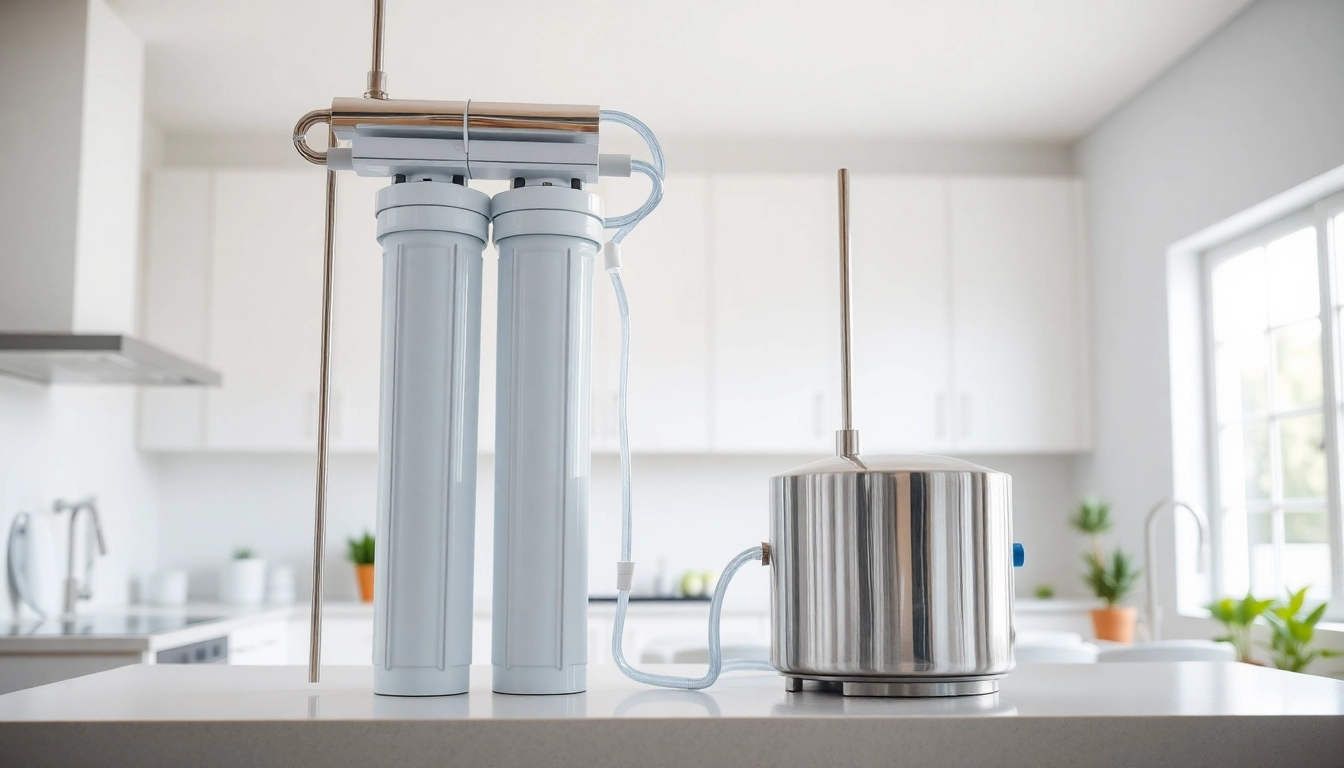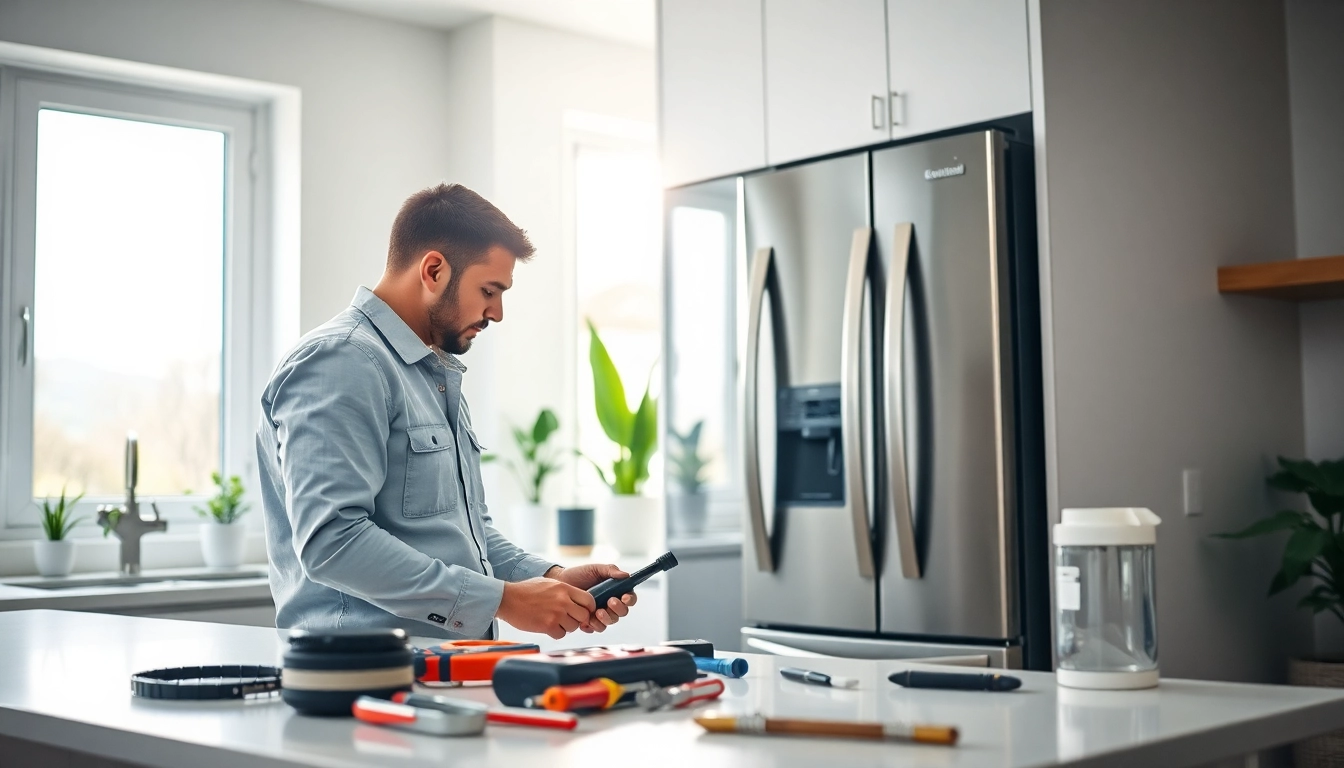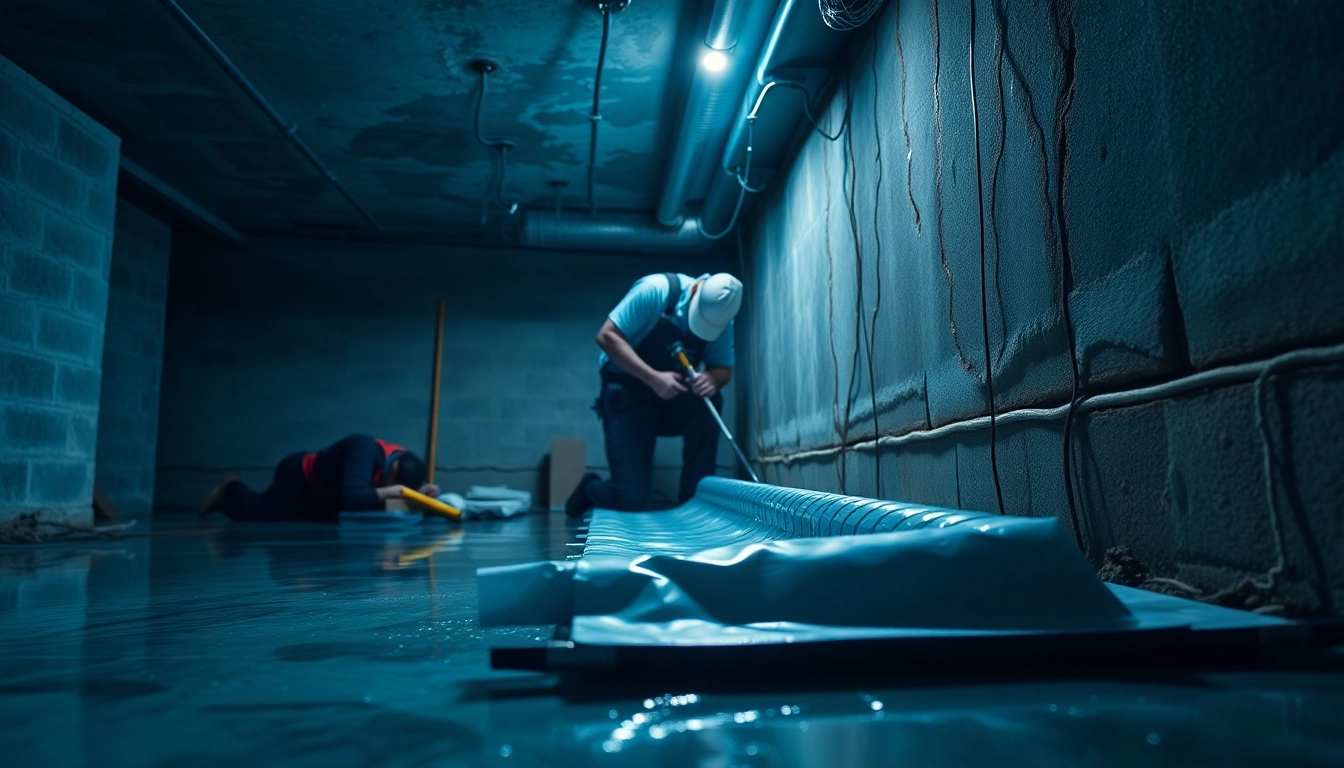Understanding the Whole House Water Filtration System
What is a Whole House Water Filtration System?
A whole house water filtration system is a comprehensive solution designed to treat all the water entering your home. Unlike point-of-use systems, which filter water at individual faucets or appliances, a whole house system is installed directly into the plumbing of your home, ensuring that every drop of water is purified before it reaches your fixtures. This system utilizes various filtration methods, including sediment filters, carbon filters, and, in some cases, advanced technologies like reverse osmosis and UV purification. By treating the water entering your home, you enhance not only drinking water quality but also the water used for bathing, cooking, and cleaning.
Benefits of Whole House Water Filtration Systems
Investing in a whole house water filtration system offers numerous advantages:
- Improved Water Quality: Contaminants such as chlorine, lead, sediment, and bacteria can adversely affect health and the quality of your water. A well-designed filtration system helps to eliminate these impurities.
- Better Taste and Odor: Many users report noticeable improvements in the taste and smell of their water, making drinking and cooking more enjoyable.
- Protection for Plumbing: By filtering out sediments and chemicals, these systems can help prevent scale buildup and corrosion in pipes and appliances.
- Convenience: With purified water flowing throughout your home, there’s no need for separate filter pitchers or bottled water, providing ease of use.
- Environmental Impact: Reducing reliance on bottled water lessens plastic waste—a significant benefit for our planet.
How Whole House Water Filtration Works
The operation of whole house water filtration systems can vary based on the technology used, but the general process follows similar principles:
- Pre-Filtration: Water first passes through a sediment filter to eliminate large particles like dirt and sand.
- Carbon Filtration: Next, the water flows through carbon filters that absorb chlorine, volatile organic compounds (VOCs), and unpleasant taste and odor-causing substances.
- Secondary Filtration: For some systems, additional filtration methods, such as reverse osmosis or UV light, can further purify the water by removing bacteria and viruses.
- Storage and Distribution: The clean water is then stored in a tank if applicable or sent directly to the home’s plumbing system for use.
Choosing the Right Whole House Water Filtration System
Key Features to Consider
When selecting a whole house water filtration system, it’s essential to assess the following key features:
- Flow Rate: Ensure the system can handle your household’s water consumption rate, typically measured in gallons per minute (GPM).
- Filtration Stages: Look for systems with multiple stages of filtration for comprehensive treatment.
- Filter Lifespan: Understand how often the filters need to be replaced and what the associated costs are.
- Type of Contaminants: Choose a system that addresses the specific contaminants prevalent in your water supply.
- Installation Requirements: Evaluate the installation process, including whether you need professional assistance, and any space limitations.
Types of Filtration Systems Available
There are several types of whole house water filtration systems, each using different technologies to purify water:
- Activated Carbon Filters: These systems effectively remove chlorine, sediment, and some volatile organic compounds.
- Reverse Osmosis Systems: Ideal for thorough filtration, reverse osmosis systems can eliminate a wide variety of contaminants but may require additional space and maintenance.
- Ultraviolet (UV) Purifiers: UV light is effective at killing bacteria and viruses, making these systems crucial in areas with microbiological contaminants.
- Water Softeners: Often interlinked, water softeners reduce hardness causing scale buildup and improve the efficiency of plumbing and appliances.
- Whole House IoT Systems: These advanced systems can monitor water quality and usage, providing real-time data through apps, enhancing the management of water resources.
Evaluating Your Household Water Quality
Before choosing a whole house water filtration system, assessing your household water quality is crucial:
- Water Testing: Conduct a water test to identify the specific contaminants present in your water supply. Kits are available for purchase, or you can also hire professional services.
- Local Water Quality Reports: Check local water quality reports, which are often available through municipal water suppliers, to understand what may be present in your water.
- System Compatibility: Ensure the filtration system you choose can effectively address the contaminants identified through testing.
Installation and Maintenance Tips for Your Whole House Water Filtration System
Preparing for Installation
Proper preparation can significantly affect the effectiveness and lifespan of your whole house water filtration system:
- Choose the Right Location: Installation should occur close to the main water line, ideally in a dry and easy-to-access location.
- Review Installation Instructions: Study the manufacturer’s installation manual carefully to ensure compliance with specifications and avoid issues.
- Gather Necessary Tools: Have tools such as wrenches, pipes, and fittings—often needed for a DIY installation—or contact a professional for an installation service.
Regular Maintenance Practices
To maintain optimal functionality, follow these routine maintenance tips:
- Regularly Replace Filters: Adhere to the manufacturers’ guidelines for replacing filters to ensure continuous purity of your water supply.
- Check for Leakages: Periodically inspect connections and hoses for leaks. Promptly repairing leaks can prevent significant issues down the line.
- Sanitize Components: Clean and sanitize the system components, especially whenever filters are replaced, to prevent contaminants from retaking hold.
Common Installation Mistakes to Avoid
To ensure a successful installation of your whole house water filtration system, be mindful of these common pitfalls:
- Inadequate Space: Failing to allocate enough space for maintenance could cause issues down the line.
- Neglecting Manufacturer Guidelines: Skipping crucial steps in the installation process can lead to system inefficiency or failure.
- Wrong Sizing: Installing a system that is not suited to your household’s water consumption can result in inadequate filtration.
Performance Metrics for Whole House Water Filtration Systems
Measuring Water Quality Improvements
Monitoring the effectiveness of your whole house water filtration system can involve several metrics:
- Before-and-After Testing: Use the same water testing methods before and after the installation to quantify improvements in contaminant levels.
- Retention of Taste and Clarity: Engage household members to provide subjective feedback on the taste and clarity of your water after installation.
- Maintenance Frequency: Track how often filters require replacement; less frequent changes can indicate an efficient filtration process.
Cost-Benefit Analysis of Filtration Systems
Conducting a cost-benefit analysis can help you understand the value of investing in a whole house water filtration system:
- Initial Installation Cost: Consider the upfront cost of the system and installation.
- Long-Term Savings: Factor in savings from reduced bottled water purchases and lower plumbing and appliance repair costs due to minimized sediment buildup.
- Health Savings: Evaluate potential healthcare savings rooted in improved water quality and a healthier lifestyle.
Long-Term Benefits for Your Home
Over time, the value of having a whole house water filtration system compounds. Some long-term benefits include:
- Increased Property Value: Homes equipped with advanced water treatment systems may have higher resale values.
- Enhanced Appliance Lifespan: Reduced buildup of scale and corrosive materials in plumbing increases the longevity of faucets, fixtures, and appliances.
- Peace of Mind: Knowing your family is drinking and using clean water provides unmatched reassurance and enhances overall well-being.
Conclusion: The Value of a Whole House Water Filtration System
Recap of Key Benefits
In conclusion, investing in a whole house water filtration system offers significant benefits, including improved water quality, better taste, and the longevity of home plumbing systems. These systems take an integrated approach to water purification, ensuring that every tap in your home dispenses clean, safe water.
Making an Informed Decision
When making the choice to install a whole house water filtration system, it’s vital to evaluate your household water quality, the types of systems available, and the features that best suit your needs. Engaging with professionals for installation and maintenance can further increase your system’s efficiency and lifespan.
Next Steps for Homeowners
If you’re considering a whole house water filtration system, start by testing your water quality to assess your specific needs. Afterwards, explore various filtration options that suit both your household demand and your budget. To embark on this journey of clean water living, visit a reliable resource for more information on the whole house water filtration system options available for your home.



